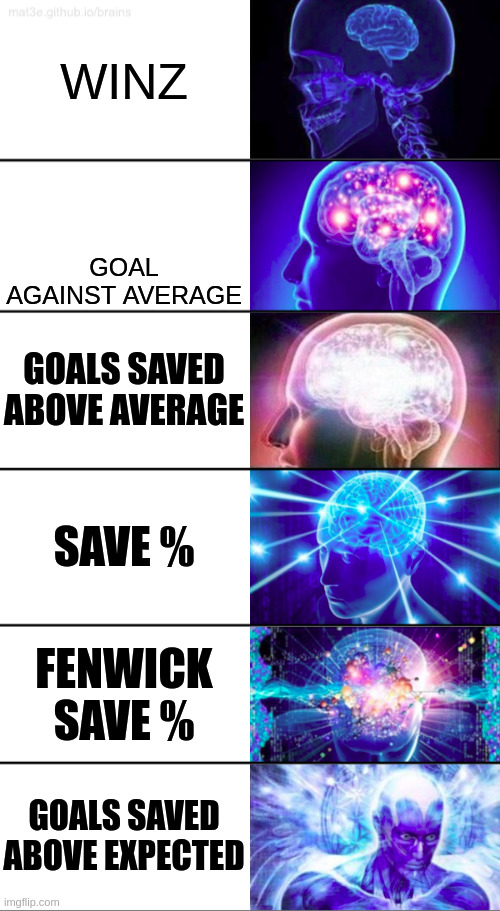Every sports fan loves statistics, and using statistics to assess players is convenient and easy, especially given that no one can watch every game from every team.
But we've had some examples of teams with horrific team save percentages in recent years with clear and obvious causes from the play of the team, and I notice that no matter what the team is doing, the majority of the hockey community seems convinced that a goalie's stats should be assessed in isolation: a goalie with a .914 on a top defensive team is simply better than one with a .885 and that's the end of the story.
I think this flies in the face of two main things: first of all, it's at odds with the fact that we all know that team defence impacts the quality of shots faced by the goalie, yet we minimize this when actually assessing goalies, and second of all there are a huge number of case studies showing the same goalie having drastically different stats in different environments as well as multiple goalies having the exact same struggles on a particular team.
Teams like Calgary last year and Edmonton this year play a high pressure puck retrieval defensive game which relies on winning individual races and battles. This leads to not allowing the other team very much possession, but also means that breakdowns lead to extremely dangerous chances. Goalies face around low-20s shots per game while facing far more dangerous chances than their opposition... a perfect recipe for a low save percentage. And as a result, every goalie playing for those teams gets victimized.
Expected goals models provide expectation values based on each shot location, and assumes that each shot will be defended in a league average way. When a team doesn't defend the dangerous areas effectively, the expected goals is unaffected, but the outcome certainly is.
We see teams like Vegas and the Islanders who can plug anyone in and get good goalie stats, and we see examples like Korpisalo and Talbot trading spots and also trading stats.
So in the face of all of this, why do we still throw goalies under the bus based on SV% and ignore the actual root of the problem?
Of course there is good goaltending and bad goaltending, but the fairest way to assess that is by actually analyzing the goals.
But we've had some examples of teams with horrific team save percentages in recent years with clear and obvious causes from the play of the team, and I notice that no matter what the team is doing, the majority of the hockey community seems convinced that a goalie's stats should be assessed in isolation: a goalie with a .914 on a top defensive team is simply better than one with a .885 and that's the end of the story.
I think this flies in the face of two main things: first of all, it's at odds with the fact that we all know that team defence impacts the quality of shots faced by the goalie, yet we minimize this when actually assessing goalies, and second of all there are a huge number of case studies showing the same goalie having drastically different stats in different environments as well as multiple goalies having the exact same struggles on a particular team.
Teams like Calgary last year and Edmonton this year play a high pressure puck retrieval defensive game which relies on winning individual races and battles. This leads to not allowing the other team very much possession, but also means that breakdowns lead to extremely dangerous chances. Goalies face around low-20s shots per game while facing far more dangerous chances than their opposition... a perfect recipe for a low save percentage. And as a result, every goalie playing for those teams gets victimized.
Expected goals models provide expectation values based on each shot location, and assumes that each shot will be defended in a league average way. When a team doesn't defend the dangerous areas effectively, the expected goals is unaffected, but the outcome certainly is.
We see teams like Vegas and the Islanders who can plug anyone in and get good goalie stats, and we see examples like Korpisalo and Talbot trading spots and also trading stats.
So in the face of all of this, why do we still throw goalies under the bus based on SV% and ignore the actual root of the problem?
Of course there is good goaltending and bad goaltending, but the fairest way to assess that is by actually analyzing the goals.




